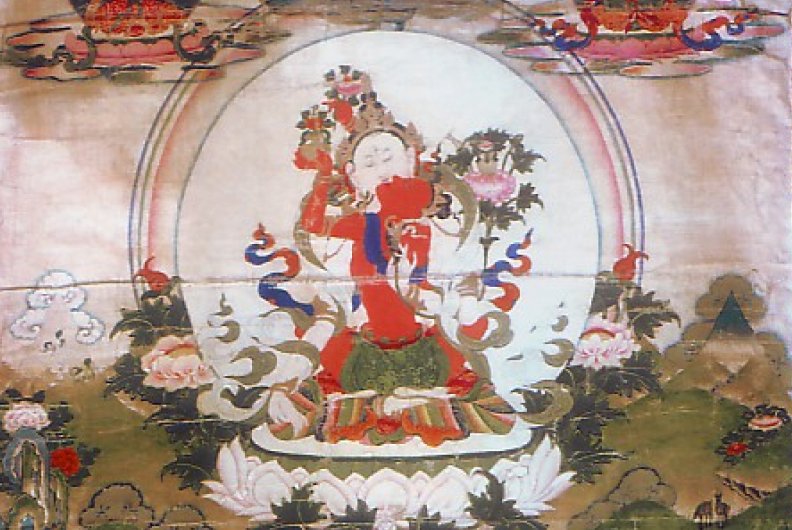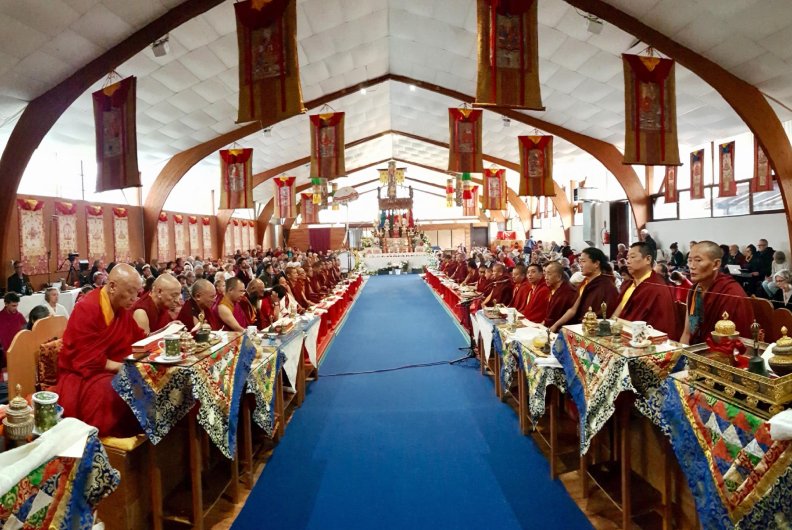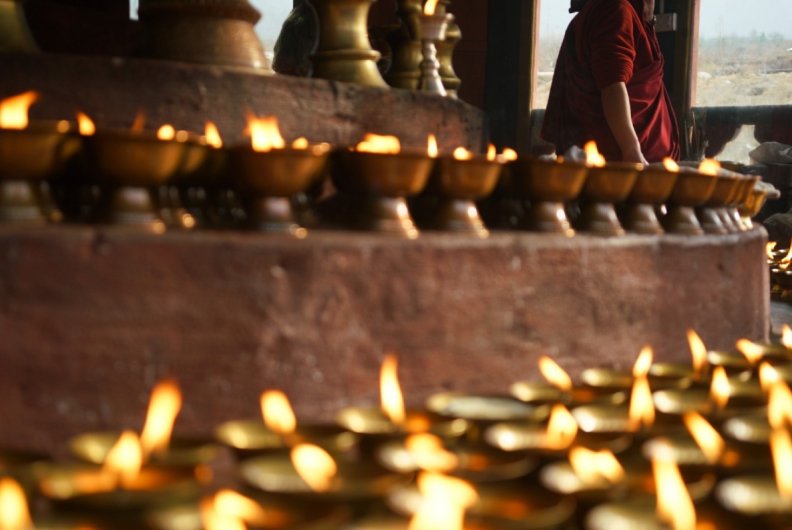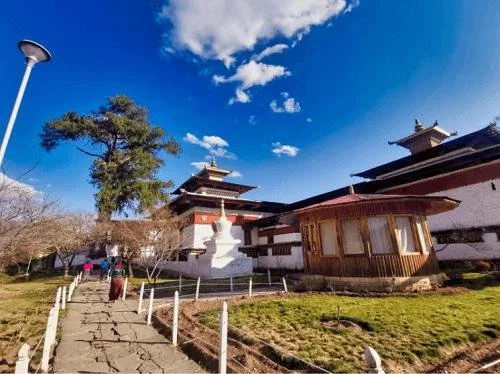
Sampa Lhundrup Drupchen, Kuje Lhakhang, Bumthang
Kurjey Lhakhang
Kurjey Lhakhang, also known as the Kurjey Monastery, is located in the Bumthang valley in the Bumthang district of Bhutan. This is the final resting place of the remains of the first three Kings of Bhutan. Also, a large tree behind one of the temple buildings is believed to be a terma that was left there by Padmasambhava.

Chime Pakme Nyingtik Drupchen at Drakarpo, Paro
Dra Karpo Monastery
Nestled gracefully atop a small hill in the enchanting Paro Valley, the Dra Karpo Monastery, also known as the “Split Rock,” is a profoundly sacred site in Bhutan. Revered for its spiritual significance and divine serenity, this monastery is not just an architectural wonder but also a treasure trove of Bhutanese mythology and history. Dra Karpo stands as a testament to Bhutan’s deep-rooted spirituality, with an aura that captivates every soul that visits.

Nyengyu Phurba Drupchen, Nyoshul Khen Centre
Paro Taktsang
Paro Taktsang (also known as the Taktsang Palphug Monastery and the Tiger's Nest), is a sacred Vajrayana Himalayan Buddhist site located in the cliffside of the upper Paro valley in Bhutan. It is one of thirteen Tiger's Nest caves in historical Tibet in which Padmasambhava practiced and taught Vajrayana.

100,000 Butter Lamp Offerings
We are currently offering 1,000 butter lamps daily for the month of Saga Dawa and beyond, for a total of 100 days to complete the grand total of 100,000 butter lamps.
You will soon be able to make offerings here to directly support this activity.
Kyichu Lhakhang
Kyichu Lhakhang is located in the north of Paro town. It is the oldest and one of the most beautiful temples in Bhutan. It also goes by the names Lho Kyerchu or Kyerchu, and it is considered to be the sacred Jewel of Bhutan. The main temple of Jowo Lhakhang has roots as far back as the 7th century.
The temple was one of the 108 monasteries established by the Buddhist King Songstsen Gampo of Tibet. 12 of the 108 monasteries were built to pin down a demoness that laid across Tibet and Himalayas who prevented the spread of Buddhism. The twelve monasteries were believed to have been built at the twelve vital points of the demoness to subjugate her and to ensure the propagation of Buddhism. The 108 monasteries were said to be built in one day by artisans who were emanations of King Songtsen Gampo himself.
The original Kyichu Lhakhang was initially small in size but after multiple visits over the years by Buddhist saints, the temple expanded both in grandeur and size. In the 8th century, Guru Padmasambhava was believed to have visited the Kyichu Lhakhang and hidden a variety of treasures in the temple. Guru Padmasambhava hid many spiritual Ters (profound treasures) in Tibet, Bhutan and other parts of the Himalayan region. These treasures were to be discovered at certain times, places and under auspicious circumstances by Tertons (Treasure Revealers). The treasures comprise sacred teachings, statues, or relics, which would greatly benefit sentient beings at the time of discovery.
Zhabdrung Ngawang Namgyal took over the temple in 1674. The temple was later reconstructed in the year 1836-1838 by the 25th Je Khenpo Sherab Gyaltshen. In 1968, a new structure of the temple was built and named Guru Lhakang. The extension was made by the Royal Queen Mother Ashi Kezang Choden Wangchuck. Other Buddhist Saints that visited Kyichu Lhakhang temple for prayers also created an impact by expanding the temple. The prominent Buddhist saints who visited the temple in the 8th century were Phajo Dugom Zhigpo, Lam Kha Nga and Guru Rinpoche.



